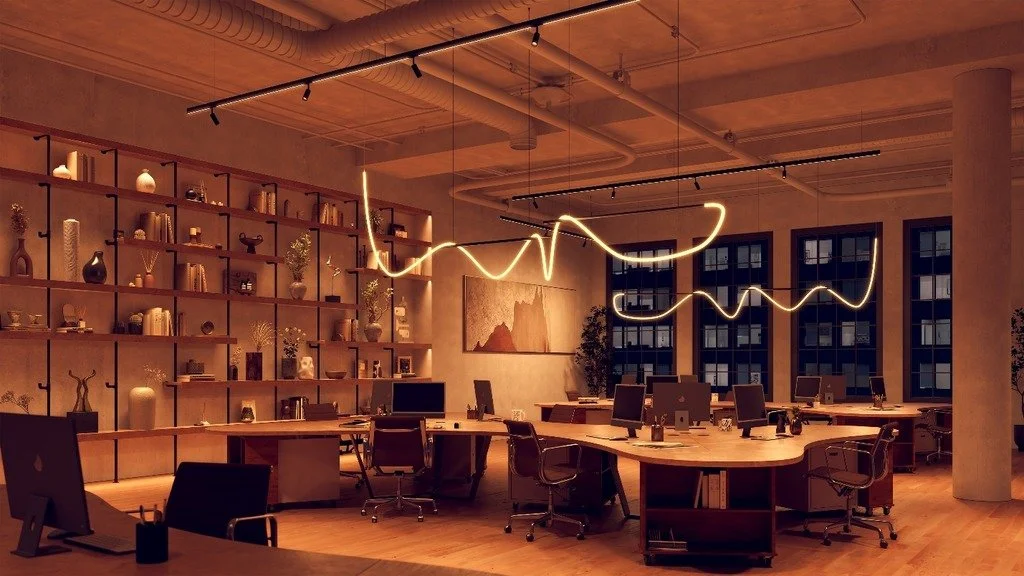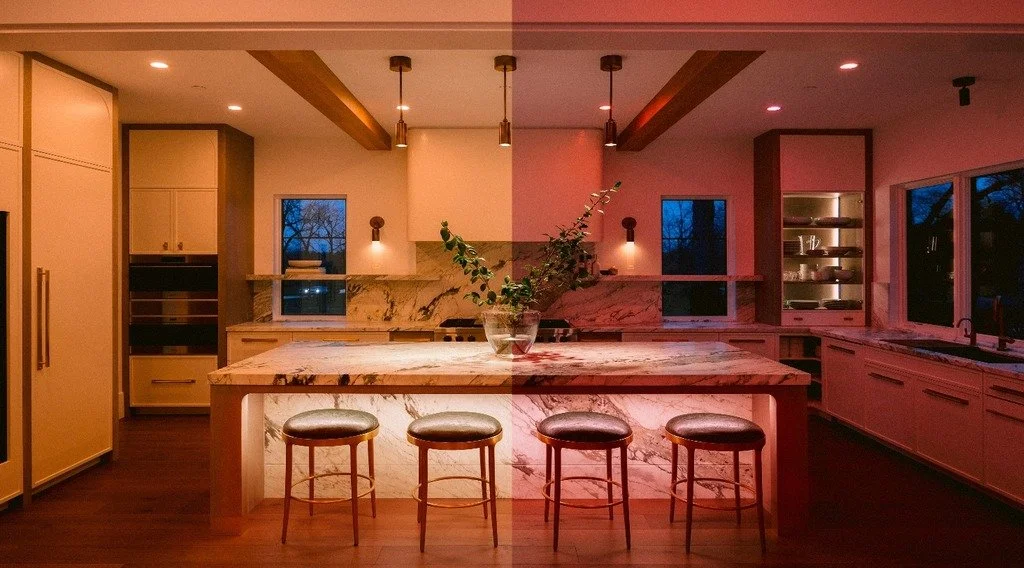Mood Lighting: Circadian-Friendly Designs for Living Spaces
Lighting does far more than brighten a room. It influences how we feel, think, and sleep. For many, the connection between lighting and well-being is subtle—but powerful. Recent design trends are now turning to circadian-friendly lighting as a way to promote health at home.
Our bodies operate on a 24-hour biological clock known as the circadian rhythm. Light is one of the main cues that helps regulate this internal timer. By aligning indoor lighting with natural light patterns, we can improve our mood, focus, and sleep.
What Is Circadian Lighting?
Circadian lighting refers to light systems designed to mimic the natural cycle of sunlight throughout the day. Morning light tends to be cool and bright, stimulating alertness. As the day progresses, natural light warms and softens, encouraging relaxation and, eventually, sleep.
This pattern isn’t accidental. Our bodies respond to light in ways that affect hormone production, particularly melatonin and cortisol. Melatonin promotes sleep and is suppressed by bright, blue-toned light. Cortisol helps us wake up and feel energized.
By designing lighting around these principles, you can support your natural rhythm instead of disrupting it.
Why Mood Lighting Matters
Beyond its biological impact, lighting shapes our emotional state. Soft, warm lighting creates comfort and calm. In contrast, cool white light sharpens focus and energy. Just as music sets a tone, lighting sets the mood.
Additionally, lighting affects how we perceive a space. It can make a room feel larger, more intimate, or even more luxurious. Mood lighting—when done with purpose—combines aesthetic appeal with mental and physical well-being.
How Modern Life Disrupts Our Rhythms
In today’s world, exposure to artificial lighting is nearly constant. Many people wake up to their phone screen, spend the day under fluorescent bulbs, and wind down with TV or tablet time. Unfortunately, this continuous light exposure—especially from blue-toned sources—can confuse the brain.
Because our bodies associate blue light with daytime, evening exposure can delay melatonin production. This makes it harder to fall asleep and can lead to fragmented rest. Over time, disrupted sleep affects focus, mood, and even long-term health.
Designing With Circadian Principles in Mind
Fortunately, you don’t need a complete renovation to adopt circadian-friendly lighting. Even small changes can make a big difference.
Start with layers. Rather than rely on a single overhead fixture, combine ambient, task, and accent lighting. This flexibility lets you adjust brightness and tone throughout the day.
Use cooler light in the morning. Natural or blue-white light helps stimulate alertness. In workspaces or kitchens, brighter tones in the early hours can help jumpstart your day.
Shift to warmer tones at night. As the sun goes down, switch to amber or soft white light. These tones signal your body to begin winding down.
Install dimmers where possible. Adjustable brightness allows you to customize light intensity based on the time of day and your needs.
Room-by-Room Guide to Circadian Lighting
Every room serves a different purpose. That means each one can benefit from specific lighting strategies tailored to its function and timing.
Living Room
This is often the heart of the home, used throughout the day. Use bright, cool lighting in the morning to energize the space. As evening arrives, incorporate warmer ambient lighting through lamps or dimmable fixtures.
Bedroom
Here, lighting should encourage rest. Avoid bright or blue-toned lights close to bedtime. Instead, opt for soft bedside lamps or sconces with warm hues. Consider smart bulbs that gradually dim before sleep and brighten gently in the morning.
Kitchen
Kitchens need functional lighting. Cool white tones are great for visibility while cooking or prepping meals. During nighttime snacking or evening routines, under-cabinet lights or softer ambient sources can keep things relaxed without overstimulating.
Home Office
This space requires focus and alertness. Use adjustable desk lamps with cooler tones during work hours. However, if you work into the evening, shift toward warmer tones to ease the transition to rest.
Bathroom
Bright, accurate lighting is useful in the morning, especially for grooming tasks. However, late-night trips to the bathroom should avoid intense white light. A low-watt nightlight or dimmed fixture can reduce sleep disruption.
Technology Meets Design
Smart lighting systems now make circadian-friendly design easier than ever. Many smart bulbs allow you to schedule color temperature and brightness changes automatically. With a few taps on your phone, you can match your lighting to the time of day.
Some systems even offer presets—energize in the morning, relax at night—so you don’t have to think about it. Motion sensors can also help maintain nighttime comfort by softly illuminating spaces when you move.
Even without smart systems, programmable plug timers or smart plugs can support daily rhythms by turning certain lights on or off at the same times each day.
The Psychological Payoff
The benefits of circadian-aware lighting aren’t limited to better sleep. People often report improved mood, more energy during the day, and less stress in the evenings. Homes begin to feel more intuitive, matching how the body wants to function.
In workplaces, circadian lighting has been shown to enhance concentration and reduce fatigue. In hospitals and schools, similar designs have helped improve patient recovery and student focus.
Even at home, these effects are noticeable. A well-lit environment that flows with your natural rhythm simply feels better.
Tips for Getting Started
Transitioning to a circadian-friendly setup doesn’t have to be overwhelming. Start small and build over time.
Change your bulbs: Replace harsh white lights in bedrooms or living areas with warm-toned LEDs.
Use smart plugs: Automate lamps to create a consistent routine.
Create a bedtime ritual: Use lighting to signal that the day is ending.
Open your curtains in the morning: Natural sunlight still offers the best cue for waking up.
Avoid screens late at night: If you must, consider blue-light filters or night mode settings.
Each small shift reinforces a healthier relationship between your body and your environment.
Final Thoughts
Mood lighting is more than decoration—it’s a tool for health and harmony. By aligning your lighting with your circadian rhythm, you create a space that supports rather than disrupts your body’s natural flow.
Incorporating these changes doesn’t require expensive installations or high-tech equipment. With thoughtful planning and simple upgrades, your home can become a place where light works with you—not against you.
Sometimes, all it takes is a softer bulb, a well-placed lamp, and a little attention to timing. Your body will thank you—with better rest, clearer thinking, and improved well-being.

